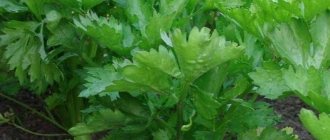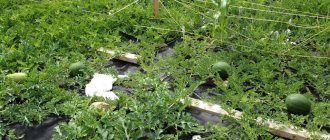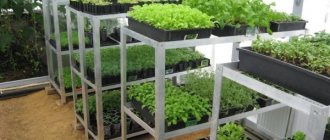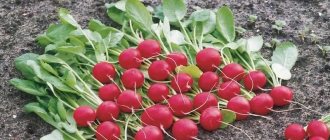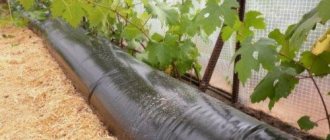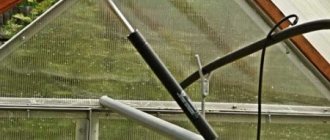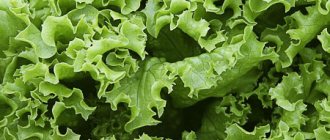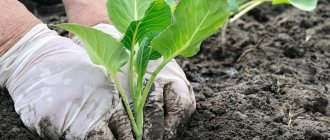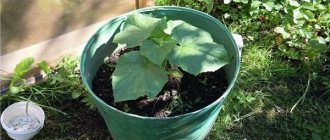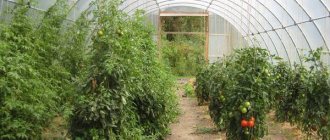Some people don’t practice this crop because they don’t eat it, some don’t know about its beneficial properties, and some simply don’t know how to grow root celery. If you belong to the third category of summer residents, make sure that this is definitely up to you.
Root celery, like its leafy counterpart, is valuable for its composition. 150 g of celery contains 80% of the daily requirement of vitamin K, which is necessary for proper blood clotting and bone health. At the same time, you can eat it either separately or in combined salads. The nutty-spicy taste of celery root is immediately memorable and rarely seems unpleasant to anyone.
Types of celery and their cultivation
A perennial herbaceous plant of the Apiaceae family, it has a bright, pleasant aroma and unusual taste. Its homeland is located in the Mediterranean, but today celery is grown everywhere.
There are three types:
- Stem or petiole differ in shelf life and beneficial properties. It is characterized by succulent shoots of light salad green color, which differ due to the method of cultivation; the species has nothing to do with it. Sometimes you can even get white stems with good hilling of plants if you constantly sprinkle them with soil.
- Leaf celery is widely used in cooking. It grows all summer and autumn, has a pleasant taste and bright aroma. It is difficult to imagine conservation without its greenery.
- The root is eaten raw and stewed. It is used instead of potatoes in the preparation of dietary first courses. In salads it is combined with apples and carrots.
Depending on your taste preferences, you can plant one type of plant or several.
Description of the plant
Celery is a spicy vegetable plant that has three varieties: root, leaf and petiole. Root celery is interesting because by the end of summer a root crop grows from it, capable of long-term storage, but during the summer young leaves are also used for fresh food. The leafy one has its main nutritional value in its leaves, which are gathered into a dense rosette on short, hollow petioles, and the root system consists of many small roots. Petiole celery has highly developed, thick (up to 4 cm) petioles for food.
All varieties are grown in most regions of the country, but produce a good harvest only on nutritious and moderately moist soils. They do not tolerate cold and acidic soils. The plant is considered one of the most cold-resistant, able to withstand frosts down to -6°C without damage. The optimal temperature for growth and normal fruiting is 16–22 °C. It is known that specimens left under the snow for the winter most often remain undamaged, and in early spring they grow back and produce abundant greenery, after which they begin to bloom.
In adulthood, celery is a powerful plant that is resistant to light frosts.
As a food plant, root celery is useful because its roots (and leaves) contain many minerals, vitamins and essential oils: about forty useful components, including potassium, magnesium and iron salts. Celery juice contains phytoncides, as well as valuable amino acids. In cooking, the root vegetable is used for side dishes, seasonings for various dishes and for preserving vegetables. It can be stewed and fried, but more often they try to eat it raw, in salads, trying to preserve the maximum amount of vitamins.
The presence of potassium in celery has a beneficial effect on the cardiovascular system, and magnesium on the nervous system. Iron is involved in the process of hematopoiesis. Celery is useful for gout, dermatitis, rheumatism. It enhances the removal of waste from the human body and is recommended in case of rapid fatigue. Its roots stimulate appetite and improve digestion. Celery infusions have antiseptic, anti-inflammatory and wound-healing effects.
The substances that make up celery facilitate the absorption of proteins, and therefore one of the popular diets consists of eating lean meat or fish at the same time as this root vegetable. It is also believed to help with specific male health problems.
However, eating celery is appropriate only in reasonable quantities, and even then not for every person. It is a strong diuretic, so people suffering from any kidney disease should not consume more than 80 g of the root vegetable per day. You should not lean on it if you have stomach problems, varicose veins, or pregnant women. When working with celery, keep in mind that on hot days it releases pungent essential oils, which, when they come into contact with the skin, cause irritation and sometimes severe burns.
Celery planting dates
You can plant celery in spring and autumn, depending on the method. The seedlings are transferred to the ground when they reach a height of 15 cm and have 4-5 leaves. Seeds are prepared in the fall. Plant the material before winter to make it easier to care for the plants during the season. Experienced gardeners still prefer to germinate seeds at home, as the yield is higher. Root crops are grown only through seedlings.
The month of planting in the ground directly depends on the region. The closer to Siberia, the later the plants are transplanted. For example, in the Urals - in May, early June; in the Moscow region - April, May.
The main requirement for weather conditions is a constant temperature of +10 ° C, no frost.
According to the Lunar calendar, celery is planted: root seedlings - April 26-30, May 1-4; seeds and seedlings of leaf and petiole - May 8-10, 14-17.
Requirements for the growing location
The first thing you will need to decide on before getting serious about growing celery is the specific land area on which the crop we are interested in will grow. The requirements for it are as follows:
- high soil fertility;
- sufficient sunlight.
However, if you do not have the opportunity to create ideal conditions for the plant, then you can grow celery even in partial shade and on soil of average fertility, since this will only slightly, barely noticeably, affect the taste and smell of the plant’s flesh.
Location
Considering that the homeland of celery is in the south, they understand that it needs a lot of sun. Accordingly, when choosing a site for planting, they give preference to warm, brightly lit places, away from trees and buildings.
The beds are prepared in the fall. The ground is dug up and cleared of weeds and plant debris. Sprinkle with peat or humus and leave until spring.
The aromatic herb protects against many types of pests, so it is recommended to plant it next to cabbage, tomatoes, cucumbers, beans, and lettuce. Such a neighborhood will help increase and preserve the harvest, and celery will not hurt at all. On the contrary, it is not recommended to combine it with potatoes, parsley and carrots in the garden beds.
How to sell celery?
When growing celery on an industrial scale, it is not easy to sell the crop - unlike tomatoes or potatoes, this product is not yet widely popular. Obviously, it is advisable for an entrepreneur to find a sufficient number of buyers in the spring so that in the fall he does not have to rush to give away perishable goods for next to nothing. There are several options for organizing sales:
- To sell goods, citizens should rent places in the markets. Sellers can be elderly people who are looking for how to earn money for retirees;
- To save time, you can contact wholesale resellers. They will take all the goods from the farmer at once and sell them at a premium to grocery chains;
- A good way to sell would be cooperation with processing companies - producers of spices and canned vegetables;
- It is advisable to establish contacts with restaurants. They are interested in suppliers involved in the cultivation of celery or the cultivation of onions for greens;
- You can register on the “Government Procurement” portal and look for tenders for the supply of vegetables for hospitals, child care institutions and sanatoriums;
- It is useful to place offers on trading platforms for agricultural enterprises and message boards for entrepreneurs;
- If a farmer is engaged not only in celery, but also in other types of business such as growing champignons or tomatoes, he should open a vegetable shop.
Seedling growing method
For seedlings, you need to select seeds. The culture does not have a high germination rate, as it contains a large amount of vegetable oils that prevent swelling. Planting material is purchased in excess; it is worth paying attention to the shelf life of the product, since 2 years after assembly the germination rate further decreases.
Before planting, the seeds are prepared and washed in a weak solution of potassium permanganate (a slightly pinkish liquid). After soaking for two hours, the material is laid out on a damp cloth or napkin, wrapped and transferred to a dry, warm place. To increase germination, add growth stimulants or aloe juice to the water, a few drops at a time. Experienced gardeners create extreme conditions by immersing a bag of seeds in either hot or cold water.
Soil for sowing is prepared independently or purchased in the store. To mix it yourself, you will need sand, peat, humus and universal soil in equal parts. After mixing the substrate, it is treated with steam, heated in the oven or frozen for disinfection. The soil surface is moistened by spraying with a spray bottle.
Spread the seed evenly over the surface, lightly sprinkling it with peat or sand. After re-moistening the crops, cover them with glass or film to create a greenhouse effect. During cultivation, make sure that the surface of the earth is moist.
For 2 weeks, and sometimes more, boxes with future seedlings are kept in the dark and warm. The temperature should be +18…+20 °C. When the first shoots appear, the containers are moved to a bright place, the covering is removed and the temperature is lowered by several degrees. At night you can drop to +10…+12 °C. For the root variety, the temperature regime is important; if it is not observed, the celery will bloom, and this cannot be allowed. The duration of daylight is at least 10 hours, so if necessary, you will need to connect artificial lighting.
When the young plants have formed two full-fledged leaves on a thin, tender stem, the seedlings can be planted. To do this, take the same soil, adding a little wood ash to it, and place it in separate containers. Transfer the sprout into the container, pinching the main root for its development (only for petioles and leaves).
Watering seedlings is needed in moderation. After irrigation, the soil is loosened so that a crust does not form. 2 weeks after transplantation, celery is fed with special preparations for the growth and development of food crops.
For the first month and a half, plant growth is slow; with a lack of light, the shoots stretch upward, which is unacceptable. Stems 25 cm high and having 4-5 full leaves are completely ready for planting in the ground. If sowing was done in a timely manner, then the seedlings are ready by mid-May. Before planting in the ground, celery is hardened off by briefly taking the container outside and gradually increasing the time spent outdoors.
Advantages and Disadvantages of Culture
The root vegetable is well known to gardeners, but not everyone grows it. Let's look at the advantages and disadvantages of planting root celery in vegetable beds (where would we be without them!).
Advantages:
- Proper sowing and care of seedlings produce strong, healthy seedlings.
- Seedlings with a lack of natural light respond well to additional illumination with phytolamps.
- If you use peat cups or cellular cassettes, the seedlings take up minimal space in a small room. But even neat sowing boxes with seedlings will not take up much space.
- Varietal diversity.
- Frost resistance of plants. Seedlings transplanted into the ground will not die even at 5 degrees below zero.
- It is convenient to place seedlings in a vegetable bed. If there are not too many seedlings, then they are placed along the edge of the bed.
- To save space in the garden bed, horse celery seedlings are planted in combination with cabbage, tomatoes, beets, beans, and cucumbers.
- After harvesting, root vegetables can be stored for a long time.
Flaws:
- Long growing season. When grown in the middle zone, it is possible that root celery will not have time to reach technical maturity, since after sowing the seeds it takes up to 6-7 months to harvest.
- The seeds do not germinate well. Therefore, it is necessary to sow seed in large quantities. As they say, no regrets.
- Even though the crop is moisture-loving, with abundant moisture, the root crop begins to rot.
- Do not plant near carrots, parsley and potatoes.
Planting seedlings in open ground
Planting seedlings does not occur immediately. It is kept for some time in a shaded place outside. Only when 6 leaves appear can the celery be transferred to the ground.
If preliminary picking has not been carried out, it is done immediately before disembarkation. This is done as follows: after thoroughly soaking the earthen ball with water, pull out the seedlings, carefully separating the roots.
The garden plot prepared in the fall is carefully loosened and seedlings are planted depending on the type as follows:
- Root - at a distance of 15 cm from each other, keeping a row spacing of 0.4 meters.
- Petiole - planted to a depth of 6 cm, leaving 20 cm on each side in the row, 0.3 m between rows.
- Leafy - 10 cm deep; maintaining distance between plants is not necessary.
Having buried the seedling, press the planting site and water it abundantly.
What varieties of celery to grow?
An entrepreneur planning an agricultural business should know that there are different types of celery, and its cultivation has different purposes - some are grown for nutritious roots, others are planted for edible petioles, and still others are harvested for fresh green leaves.
Celery root is somewhat similar to beets. It forms a juicy, fleshy root of a spherical or flattened shape, reaching a mass of one and a half kilograms and a diameter of 15 centimeters. The above-ground part looks like a bunch of 20–40 short stems topped with small leaves. It is not used as food. Suitable for growing root celery in open ground:
Celery root varieties
| Name | Growing season, days | Fruit weight, g | Fruit diameter, cm | Productivity, t/ha |
| Albin | 160–170 | 400–600 | 12–14 | 50–65 |
| Anita | 150–160 | 250–400 | 10–13 | 30–45 |
| Diamond | 140–150 | 300–800 | 12–16 | 23–49 |
| Egor | 170–180 | 250–600 | 10–14 | 30–35 |
| Esaul | 150–160 | 300–900 | 12–16 | 30–35 |
| Ivan Tsarevich | 150–160 | 300–800 | 12–15 | 30–35 |
| Casanova | 160–170 | 400–600 | 10–14 | 30–35 |
| Cascade | 140–150 | 300–500 | 10–14 | 28–35 |
| Kornevoy Gribovsky | 130–150 | 300–700 | 12–15 | 25–30 |
| Maksim | 130–150 | 200–450 | 7–10 | 30–38 |
| Prague giant | 110–120 | 500–700 | 12–15 | 22–35 |
| The president | 140–160 | 300–500 | 10–14 | 30–34 |
| Russian size | 150–170 | 800–1300 | 15–18 | 25–40 |
| Strongman | 140–150 | 250–450 | 8–12 | 23–27 |
| Yudinka | 130–160 | 250–450 | 10–12 | 30–32 |
| Apple | 140–150 | 200–250 | 8–10 | 23–47 |
Petiole celery does not have a root crop, but its main advantage is its elastic, aromatic stems up to 25–50 cm high and 3–4 cm thick, of which there are 20–25 on one plant. This culture can be bleached (additional processing is required to remove bitterness) and self-bleaching. To grow petiole celery in open ground use:
Varieties of petiole celery
| Name | Growing season, days | Socket weight, g | Length of petioles, cm | Productivity, t/ha |
| Self-bleaching | ||||
| Gold | 150–160 | 800–850 | 30–35 | 40–50 |
| Malachite | 90–100 | 1000–1200 | 32–35 | 28–40 |
| Tango | 160–180 | 1000–1200 | 40–50 | 20–37 |
| Bleached | ||||
| Anita | 90–100 | 800–1000 | 30–40 | 30–40 |
| Atlant | 150–170 | 300–400 | 40–45 | 25–30 |
| Male valor | 150–165 | 600–800 | 40–55 | 33–38 |
| Sail | 75–80 | 800–1000 | 35–40 | 32–35 |
| Pascal | 90–100 | 450–500 | 25–30 | 30–39 |
| Triumph | 100–125 | 500–800 | 25–35 | 35–40 |
| Crunch | 100–120 | 600–900 | 40–45 | 30–32 |
| Utah | 160–170 | 350–450 | 25–30 | 30–37 |
Leaf celery is also characterized by fibrous roots that have no value to the consumer. For the sake of their specific taste and smell, they eat wavy leaves about 20 cm long, of which there are from 50 to 200 on one bush. Suitable for growing leaf celery in open ground:
Leaf celery varieties
| Name | Growing season, days | Socket weight, g | Bush height, cm | Productivity, t/ha |
| Cheerfulness | 65–70 | 220–270 | 55–60 | 24–30 |
| Zakhar | 80–90 | 400–500 | 60–65 | 25–28 |
| Kartuli | 60–70 | 300–350 | 45–55 | 28–32 |
| Gentle | 90–105 | 400–450 | 50–60 | 32–35 |
| Sail | 70–80 | 320–380 | 45–50 | 33–47 |
| Samurai | 75–82 | 500–650 | 50–65 | 38–40 |
Direct sowing in open ground
If there are no seedlings or there is no desire to tinker with young plants, sow them in open ground. In time, this occurs in late autumn, before the first frost.
If the bed is not fertilized, prepare it: dig it up, clear it of debris and weeds, and add fertilizer. There is no need to prepare seeds as for seedlings, but it is important to choose fresh seed material, preferably from the current year. Having buried the seeds 2 cm, cover the area with film. When choosing a place, comply with the requirements necessary for the plant: good light and soil moisture.
You need to sow thickly before winter; many seeds will not sprout, but it is not difficult to thin out the excess in the spring.
The advantages of such planting include the fact that fresh greenery will appear in early spring. Otherwise, the risks are too great. Experienced summer residents advise playing it safe and still growing seedlings.
If we talk about species, then leaf celery is the most frost-resistant. It often emerges after long winters.
Let's sum it up
As you know, celery is a crop rich in vitamins and various microelements that are very useful for humans. You can not only prepare various culinary dishes from it, but also use it as a raw material for making alcohol or cosmetics. Mass cultivation of this crop in the gardens of Russians is a rare phenomenon, however, it still occurs, because celery can be successfully stored for a long time.
Careful selection of celery varieties is a mandatory stage in preparation for cultivation.
Before planting the crop we are considering today on the beds in the garden, you will need to decide which type of this plant is most pleasant to you:
- giving abundant green foliage;
- forming large rhizomes;
- used for the sake of juicy petioles.
After this, study the available varietal varieties of plants in the category you have chosen, and decide which one you want to grow, based on:
- the climatic conditions prevailing in the region, affecting both the date of planting in the soil and the harvest;
- the space available to you;
- composition of the soil on the site, etc.
It is best to start cultivating a crop by sowing seeds for seedlings in order to obtain a more abundant and early harvest.
Caring for celery in open ground
Each type of plant requires unique care:
- Root - afraid of weeds that grow quickly and interfere with seedlings. It is recommended to pay special attention to weeding. You need to feed the plant three times, the first time 2 weeks after planting. A little later, when the stems begin to actively rise, they will fertilize again. The last time - upon the formation of the root crop in the initial period.
- Petiole - must be planted correctly. In the beds prepared in the fall, 30 cm deepenings are made, leaving 0.4 meters between the rows. Fill the holes with fertilizer. The moats are meant to cover the petioles so that they are white and not bitter. There are specially bred varieties that do not need hilling, but they are not as tasty and are afraid of cold weather. After planting the seedlings, the first fertilizing is carried out a month later. As they grow, the stems are covered with soil, carefully monitoring the soil moisture. After irrigation, be sure to loosen the soil. When the height of the bush reaches 30 cm, the shoots are carefully tied into bunches and wrapped in dark paper, leaving only the tops with leaves on the surface.
- Leafy is the most unpretentious species. It needs timely watering, weeding and loosening. To prevent a crust from forming after irrigation, dry grass is laid at the base, at a short distance from the center of the bush, so that growth does not stop.
Harvest and storage
Celery root is harvested in October. The root crop remains in the vegetable beds until frost begins. There should be no rain when collecting, and the soil should be watered an hour before digging if it is very dense. Then it is easier to pull out the root vegetables.
When the leaves almost turn yellow, it is time to harvest the roots.
Celery root has a thin skin, so care is needed. Carefully cut off the leaves, leaving 2 cm at the rhizome. If the root is not damaged, then the celery is better preserved.
Until spring, root vegetables can be taken to the basement or put in the refrigerator. Root vegetables are best preserved in the cellar. Place celery in a box with sand, stalks facing up. The cellar must be ventilated once a week, and the temperature is maintained in the range from +2 to +10 degrees.
The root vegetable can be frozen by cutting into slices and placing them in bags.
Before use, simply defrost the contents of the package.
You can save celery root in dried form. The fruits chosen are dense and without damage. Remove soil and wash thoroughly. The dried root vegetable is crushed in any way.
Suitable for drying:
- Oven preheated to 60 °C. The door should be slightly open when drying.
- Dry in the fresh air without exposure to the sun. Time – 2-3 weeks.
- Electric dryer at 50 °C. Dry for 8-10 hours.
Celery root has mostly benefits. And there are enough useful qualities to grow the root vegetable yourself next season.
Diseases and pests of celery
The plant in the beds is not protected from diseases and pests, so it is recommended to carefully monitor the harvest, taking timely measures when problems are detected.
| Problem | Signs and causes | Corrective measures |
| Rust | Small spots of reddish-brown color, densely scattered over the surface of leaves and petioles. Gradually the affected areas dry out. | As treatment, spray the area with Fitosporin-M at a concentration of 4-5 mg per liter of water. You won’t need a lot of the drug for 1 square meter. m. only 100 ml is required. solution. |
| Septoria | In cool, damp weather in the last days of summer, yellow spots with whitish centers appear on the plants. The stems have brown depressed lesions. | Topsin-M and Fundazol are treated. The drugs are toxic, so they are stopped 20 days before harvest. |
| Cercospora | A sign of the disease are light spots with a brown border on the surface of the leaf; in advanced cases, the petioles become covered with a purple coating. | |
| Downy mildew | With strong temperature changes and cold dew in the morning, celery becomes covered with a white cobwebby coating, and as the condition worsens, a film with black spots appears. | It is treated by spraying with infusion of field thistle. The medicine is prepared as follows: 300 grams of crushed culture is poured with half a bucket of water and allowed to stand for 8 hours. |
| Cucumber mosaic | The virus is carried by pests, aphids and mites. Spots or rings of various sizes and shapes appear on the plant. | If signs are detected, the bushes are destroyed. The disease cannot be treated. |
| Borscht fly | The pest is most dangerous in May; it flies in to lay eggs under the skin of the leaves. In this case, tubercles are formed. As the larva matures, it eats away long tunnels inside the shoot, making them bitter and fibrous. | The only means of protection against flies is onions planted between the rows. As a preventive measure, it is recommended to carefully monitor the cleanliness of the beds. |
| carrot fly | Lays offspring under the roots. The larvae eat greens and shoots, roots and leaves. | Affected bushes and neighboring crops are treated between rows with a mixture of sand, dry mustard and tobacco dust, combined in equal proportions. |
| bean aphid | It is dangerous for crops, drinks juices from plant leaves, and is a carrier of diseases. | Spray with a decoction of potato, tomato or dandelion tops. You can use an infusion of citrus peels with water in a ratio of 10:1. Keep in a dark place for 2-3 days, then spray the bushes affected by aphids. As a preventative measure, it is recommended to promptly clear the area of weeds and plant debris. |
How to prepare a plot for celery?
To understand the techniques of agricultural technology, an entrepreneur can start by planting a crop on a personal plot or in a country house. In the future, for the industrial cultivation of celery, it is necessary to rent a field of two to three hectares. There is no point in buying it, since crop rotation rules do not allow the use of the same areas for several years in a row. What to pay attention to:
- The culture grows best in loose sandy loam soils with a pH of 6.5–7.5. If necessary, you can neutralize the soil with chalk or lime;
- The area should be moderately damp. Celery does not tolerate drought, but in wetlands its roots begin to rot;
- Optimal growing conditions for celery include constant good light. In the shade, roots and leaves become small and tasteless;
- Tomatoes, beans, cabbage, and potatoes are suitable as predecessors. You cannot plant celery after carrots, parsley and other Umbelliferae.
The technology for growing celery includes mandatory soil preparation. It does not matter whether it was previously fallow or used for some crops. What should be done:
- On the eve of autumn, to destroy weeds and insects hibernating in the soil, the area is plowed to a depth of 25–30 cm;
- During plowing, the soil is fertilized by adding 60 t/ha of humus or old manure, 250 kg/ha of superphosphate and 200 kg/ha of potassium sulfate;
- Peat soils are additionally enriched with microelements by adding 5 kg/ha of copper sulfate and 1 kg/ha of boric acid under the plow;
- In the spring, after the snow melts, deep harrowing of the soil is carried out, fertilizing it with the addition of 350 kg/ha of ammonium sulfate;
- As the weeds germinate, one or two millings of the soil are carried out to a depth of 8–10 cm to destroy their roots.
Mr. Summer Resident advises: how to harvest and preserve the celery harvest
Each type of celery ripens in its own time and should be harvested accordingly:
- Stem - the harvest is harvested by the end of autumn, and during the summer a pair of petioles are selectively broken off.
- Root - you need to dig up root crops before frost. Growth continues until mid-autumn, so thinning and eating part of the harvest is acceptable. Dig up plants carefully, without injuring neighboring plants.
- Leafy - greens are broken off; pruning does not have a very good effect on the health of the plant. Thin roots are removed, and the main rhizome is dried and stored.
Is it profitable to grow celery?
It is difficult to determine the profitability of a celery business down to the penny, since it depends on the weather, the quality of seeds and soil, the experience of the entrepreneur and other unpredictable factors. However, average yields will help you get an idea of how much you can earn:
- When growing root celery, it is realistic to harvest 25–40 t/ha of crop;
- When growing stem celery, the yield reaches 28–40 t/ha;
- When growing leaf celery, the total harvest will be 23–35 t/ha.
Thus, even on a relatively small plot of only two hectares, growing and caring for celery can bring decent income:
Revenue from celery cultivation
| Product type | price, rub. | Quantity, kg. | Amount, rub. |
| Celery root | 70 | 60000 | 4200000 |
| Petiole celery | 70 | 60000 | 4200000 |
| Leaf celery | 100 | 50000 | 5000000 |
These initial data make it possible to calculate the profitability of the enterprise and the amount of net profit for the year. As you can see, regardless of the type of celery, the initial investment in the business pays off in the first season:
The profitability of growing celery
| Index | Root | Chereshkovy | Sheet |
| Revenue for the year, rub. | 4200000 | 4200000 | 5000000 |
| Expenses for the year, rub. | 1033874 | 1033874 | 1033874 |
| Profit, rub. | 3166126 | 3166126 | 3966126 |
| Unified agricultural tax, rub. | 189966 | 189966 | 237966 |
| Net profit, rub. | 2976160 | 2976160 | 3728160 |
| Profitability, % | 287,8 | 287,8 | 360,6 |
| Capital investments, rub. | 1676800 | 1676800 | 1676800 |
| Payback period, years | 1 | 1 | 1 |
Soil preparation
The soil on which celery is planted must be fertile, loose, and its acidity neutral. Soil preparation begins in the fall. If the soil is acidic, you must add lime or dolomite flour; you can also scatter ash on the bed.
Also in the fall you can apply phosphorus and potassium fertilizers (20-30g per 1m²). As for organic fertilizers, it is highly recommended to add either compost or humus (up to 3.5-5 kg per 1 m²). Under no circumstances should fresh manure be applied, especially in spring, as this will cause the root crop to branch. After applying fertilizers, the soil should be dug up.
In the spring, a month before planting, they begin to prepare the bed for celery again, apply complex fertilizers with microelements (30-40 g per 1 m²), then dig up and level the prepared soil.
Site selection
The bed for planting celery is usually prepared in the fall. It is cleared of weed roots, dug up and fertilized with manure. If these works are postponed until spring, then when choosing a suitable site you need to remember:
- celery does not like acidic soil;
- if the land is often subject to flooding, there is a high probability of infection of the crop with bacterial and fungal diseases;
- in a bed with heavy soil a drainage layer is necessary;
- Only rotted manure should be used as fertilizer.
To plant, you must wait for cloudy weather. If there are successive sunny days, then planting work needs to be done in the evening hours. If you plant large-fruited varieties of root celery, it is necessary to provide a distance of 40 cm between plants, and for smaller, medium-sized varieties - 25 cm.
First shoots
After sowing, it will take at least two weeks before tender shoots appear. They require a very careful attitude when leaving. If the soil dries out, the crops should be carefully moistened with heated water using a hand sprayer. It’s even safer to use a pipette, syringe or syringe. With this watering, each plant should receive approximately three tablespoons of water at the root.
As soon as the first shoots emerge, you should immediately remove the cover from the container and place the box near the most illuminated window. At the same time, the air temperature decreases; it should not be higher than +16 degrees.
Seedlings begin their development almost in winter: the days are short at this time, which means that the gardener should organize additional lighting for the plants using phytolamps.
During the first week, supplementary lighting should be around the clock, and then phytolamps can be turned on only in the morning and evening hours. And only in cloudy weather do seedlings need additional lighting all day.
Planting seeds for seedlings
On the territory of our country, in most regions, root celery is grown exclusively through seedlings. Growing times are as follows:
- in the southern regions: late January ─ early February;
- in the middle zone: in the second half of February;
- Siberia and the Urals: early March.
Soil for sowing can be bought in stores for summer residents, but if possible, it is better to prepare it yourself. The soil mixture should consist of:
- from one part of turf land;
- two parts of humus;
- one part of peat;
- one part sand.
To disinfect the finished soil, it is advisable to spill it with a warm one percent manganese solution. And just before planting, the soil should be mixed with wood ash. You will need approximately one tablespoon for every kilogram of soil. The most suitable container option is wooden or plastic containers. You can also use plastic cups or cassettes, peat tablets and pots.
If there are no drainage holes, a small layer of pebbles and sand should be poured onto the bottom of the planting container, followed by prepared soil.
Soaking procedure
First of all, seed treatment is necessary. The fact is that due to the high content of essential oil, they germinate slowly. To speed up the process, you need to soak the seeds: pour them into gauze and place them in heated water for a day. The water must be changed every four hours.
Some gardeners use soaking seeds not in water, but in vodka. This procedure lasts no more than a quarter of an hour, then the seeds are washed in clean warm water and dried. Experimenters call this option a good prevention against possible root diseases.
Only previously untreated seeds can be soaked. You should study the notes on the packaging: if it is indicated that the seeds are coated or encrusted, you should abandon the soaking procedure.
Features of the landing stage
This final stage is perhaps the most important, especially for those who are just mastering the science of how to grow root celery. It is necessary to strictly follow the sequence of actions:
- Fill the container prepared in advance with moistened soil and lightly compact it.
- Pour a two-centimeter layer of snow on top of the ground, lightly crush it and spread the seeds on top. A little later, the melted snow will immerse the seeds to the desired depth.
- Cover the crops with film or glass and leave them in a room with an air temperature of at least +25 degrees.
Seeds can be planted without adding snow, but in this case they need to be mixed with sand, scattered over the surface of the soil and sprayed with water with a growth stimulant dissolved in it.
